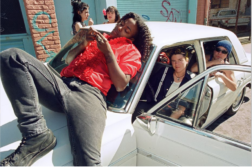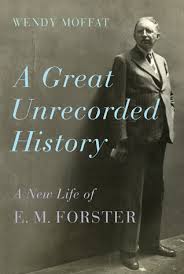 A Great Unrecorded History: A New Life of E.M. Forster
A Great Unrecorded History: A New Life of E.M. Forster
by Wendy Moffat
Farrar, Straus and Giroux
416 pages, $30
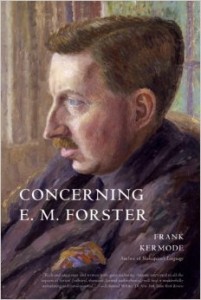 Concerning E.M. Forster
Concerning E.M. Forster
by Frank Kermode
Farrar, Straus and Giroux
192 pages, $24.
“I WANT to love a young man of the lower classes, and be loved by him and even hurt by him. That is my ticket,” wrote E. M. Forster in 1935, “and then I have wanted to write respectable novels.” This extraordinary bifurcation is reflected in two new books on Forster: Wendy Moffat’s tells the story of Forster’s homosexual life, and Frank Kermode talks about his writing. The first is so interesting that it doesn’t matter if you’ve not read the novels; the second assumes some familiarity with the work. Read side by side, they reflect uncannily the dichotomy in the quotation above, the fact that the author of Maurice and A Passage to India led two lives—one as a celebrated Edwardian novelist, the other as a homosexual man.
Forster used the word “minority” rather than homosexual; and given the way England changed during his life, he must have been thinking of himself as a minority of one when he called himself “the last Englishman.” But one can see why. He was sixteen when Oscar Wilde was sent to jail, yet lived to see the repeal of both the Wolfenden Report in 1957 and the Sexual Offences Act in 1967. Born in 1877 to a man Moffat suggests was gay, Forster was ten months old when his father died, which left him to be raised by his mother and aunts in a nest of femininity—his childhood book on etiquette was called Don’t—till he went off to Cambridge University, where he met men who would be his friends for life.
Forster had a sort of genius for friendship and would be helped by classmates at crucial moments throughout his life; he even returned to Cambridge toward the end to live in his old college. Before that, perhaps because the world was smaller then, he knew a lot of people: Henry James, Edward Carpenter, Lawrence of Arabia, Katherine Mansfield, D. H. Lawrence, Isherwood and Auden, J. R. Ackerley, Paul Cadmus, Glenway Wescott, and Benjamin Britten, whose temperamental behavior caused Forster to lose his composure while the latter was writing the libretto for Billy Budd. Forster was on his way to visit T. E. Lawrence the day his host died in a motorcycle accident, and he stood beside a sobbing Winston Churchill at the funeral. Reading Moffat, it’s fascinating to watch how homosexual identity changes from the Victorian (Henry James, John Addington Symonds) to the Edwardian (Forster, Edward Carpenter) to the modern (Ackerley, Isherwood, Auden, Cadmus). Each generation, needless to say, was different.
Forster’s writing, however, is linked to the Edwardian Age. He found material for his novels and short stories in a post-graduation trip to Italy with his mother (A Room With a View), teaching at the Working Men’s College in London (Howards End), three years in Egypt during World War I as a Red Cross volunteer, and two later trips to India, one as the secretary of an Indian prince (A Passage to India). The novels that made him famous (Where Angels Fear to Tread, A Room With a View, Howards End) were all written in his late twenties and early thirties; then he fell silent until A Passage to India fourteen years later. After that there followed a lifetime of honors, journalism, criticism, radio broadcasting, travel, and an intimate life with a policeman named Bob Buckingham—but no more novels until after his death, when Maurice, a tale of same-sex love with a happy ending, was published.
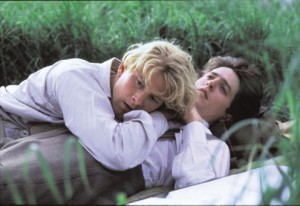
Although Maurice was written when Forster was young, he would only revise and circulate the manuscript among friends while he was alive, refusing to publish even though Isherwood and others urged him to do so. (When someone pointed out that André Gide had published his gay novel, Forster replied: “Gide hasn’t got a mother!”) “Respectability” was the word he used when writing to a friend from Egypt about the cultural taboo that kept Maurice unpublished and its author celibate, until finally, one night in his mid-thirties, he had sex on a beach in Alexandria, and later fell in love with a tram conductor (like Whitman in Washington). He never came out to his mother, who died when Forster was 62, a loss so devastating that months later he would think: “Couldn’t she just give up being dead now?”
Forster’s novels are largely about the world he lived in as his mother’s son—the Edwardian world of Italian pensiones and English houses, of, as he put it, “marriage, love, friendship, family feuds, social nuances, lawsuits about property, illegitimate children, failures on the stock exchange … all essentially the subject matter of Dickens, Trollope, Jane Austen, Arnold Bennett.” He is considered a modern writer, but his novels read like the loose, baggy monsters of the 19th century that Henry James decried. (Forster thought War and Peace the great novel; James found it disorganized.) All of Forster’s novels open as if the curtain on a West End stage had just risen, with a scene that plunges us into a dramatic situation ripe with romantic suspense. It’s no surprise that almost all have been filmed, mostly by Merchant and Ivory (though A Passage to India was by David Lean). One can only puzzle over his claim that his two great literary influences were Jane Austen and Marcel Proust.
What he did not write about is the staple of most gay writers nowadays: his personal experiences. Yet Forster (famous for the epigraph to Howards End: “Only connect”) was blessed with a gay life whose intimacy, stability, and emotional richness put to shame the arrangements of many modern homosexuals. Forster, unlike Ackerley, did not trick or go to a gym; from the start he wanted a shared domestic life, which he found with a policeman who eventually married a woman but never left Forster. In fact, Forster died not in his rooms at Cambridge but in the care of Bob Buckingham and his wife.
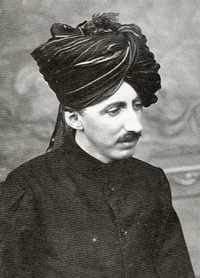
Moffat covers all this in a way that makes the book hard to put down. She sets out to tell the story that Forster could not—what he referred to as “a great unrecorded history”—and has written the engrossing tale like a novelist (sometimes too much like one, as when she says the house in Provincetown in which Forster was a guest “kissed the beach”). Kermode, on the other hand, considers Forster only as a writer. Neither book really tries to connect the two aspects of Forster’s existence: the famous novels and the private life sit there in separate compartments, rather as they did when he was alive. Reading Kermode after Moffat, in fact, gives you the feeling you have after a visit to relatives who know you are gay, but never once inquire about your personal life. Kermode doesn’t ignore Forster’s sexuality; like Moffat, he recognizes the significance of Forster’s visit to the openly gay Edward Carpenter and his working-class lover, George Merrill, who, when Forster was leaving, put his hand on a spot just above Forster’s buttocks, a gesture that “seemed to go straight through the small of my back into my ideas, without involving my thoughts,” Forster later reported. But he’s not concerned with any effect homosexuality may have had on Forster’s work.
This raises the question: how is Forster’s sexuality relevant to his writing? The first part of Kermode’s book includes three talks he gave as part of the Clark Lectures at Cambridge—which Forster had given eighty years before—during which he touches on Forster’s disagreement with Henry James’s belief in the importance of literary design (which Forster argued came with a price of excluding too much real life). Kermode’s book, which reads like a conversation with a favorite professor, is free of jargon—except for one extraordinary sentence: “But the narratologist will distinguish analepses as either homodiegetic or heterodiegetic, according to the status or otherwise of the story affected by the analeptic intrusion.” The second half of the book is what Kermode calls a causerie, “a loosely organized series of observations” on, for example, the practical realities of publishing when Forster was alive, and the nature of Forster’s class consciousness.
Regarding the latter: Forster, with his attraction to working-class men and love of foreign countries, is thought of as an anti-snob; and Kermode concedes that Forster was “ethically distinguished.” But in a discussion of Leonard Bast, the working-class man in Howards End who collides with the upper-middle-class Schlegel sisters at a Beethoven concert, Kermode claims Forster was as unable to imagine an educated man from the lower orders as any other member of Forster’s class. (Kermode himself is a working-class man who ended up teaching literature at Forster’s alma mater—though Kermode notes more than once that Forster thought critics were useless.)
THESE TWO BOOKS are so different that one is tempted to say they illustrate the difference between a maternal and a paternal sensibility. A Great Unrecorded History is particularly moving to a gay reader: the narrative of this man’s long life (Forster died at 91) contains things unique to Forster and things any gay person will recognize—his relationship with his mother, his long period of celibacy, his first love, his attraction to working-class men, the remarkable way in which he was kept in Bob Buckingham’s marriage. Moffat’s book is sympathetic. She charges Forster with misogyny at one point but only briefly; otherwise, she says, a friend of Forster’s “put it beautifully” when he said Forster believed “that the true history of the human race was the history of human affection.”
Kermode is a good deal cooler. Not only does he argue that Forster was a creature of his class, but we also learn that when Lady Spender was asked what word came first to mind when thinking of Forster, she chose “censorious,” and Percy Lubbock found it amusing that Forster had become “the holy man of letters” because, he told Forster, “You’re really a spiteful old thing.” Finally, when Mohammed el Adl, Forster’s first love, was dying, an event that in Moffat moves the reader considerably, we learn from Kermode that Forster wrote in his journal, “I don’t give a damn so far.” In short, all biographies are selective.
Still, the different treatments of Forster’s homosexuality return us to the question, Was Forster’s sexuality relevant to his work? Moffat describes Forster’s private life without relating it much to his novels; Kermode describes his fiction without connecting it to his sexuality. Moffat is out to tell an “unrecorded history”; Kermode examines a novelist whose one gay effort, Maurice, was so “inferior” that he doesn’t bother to tell us why.
For this reason, I found myself in a library looking again at Forster’s novels; and while doing so I stumbled on a preface to the Penguin edition of Howards End in which the novelist David Lodge says that not only did Forster fail to produce any “masterpieces” of gay literature but that, had Forster had his wish—to write openly about homosexuality—his work would have served merely a small “coterie.” Both Kermode and Lodge think Forster achieved greatness only when he did not write about homosexuality. (Even Forster’s friend Eudora Welty, reviewing a collection of the gay stories published after his death, said that when the women went, there went the humor.)
It’s true that Forster’s gay short stories—a batch of which he destroyed early in life but replaced later with new ones—can seem a bit silly (in one of them, the Greek torsos in a museum come to life, like the dioramas in A Night at the Museum), and if they were all Forster wrote, we would probably not be discussing him now. But is Maurice “inferior”? This novel about “minorities” was not written by an old man as a last gesture toward what might have been; Maurice was written amid the burst of novels that Forster turned out in his prime—part of the same eruption that produced Howards End and A Room With a View. So why would this one book be devoid of the literary skills the other novels exhibit? Or is Maurice “inferior” because of its subject matter?
This question has hardly been settled by the writers after Forster who were free to do what he felt he could not. Of course one imagines that Forster would have been pleased to see Alan Hollinghurst’s The Line of Beauty (2004) win the Man Booker Prize, but one may still wonder: do taboos force artists to create works of greater depth? What if Tennessee Williams had been able to write directly about homosexuality throughout his career—would we have A Streetcar Named Desire?
“I should have been a more famous writer had I written or rather published more,” Forster wrote in his diary late in life, “but sex has prevented the latter.” Forster said he stopped writing because he no longer wanted to write about love between men and women; Kermode says it was because he lost his power of imagination. Whatever the explanation, Maurice was written long before he stopped, and the only reason Forster didn’t publish it was the force of “respectability.” It’s ironic that many years later, this is where writers who have been able to write about homosexuality may find themselves, for entirely different reasons.





